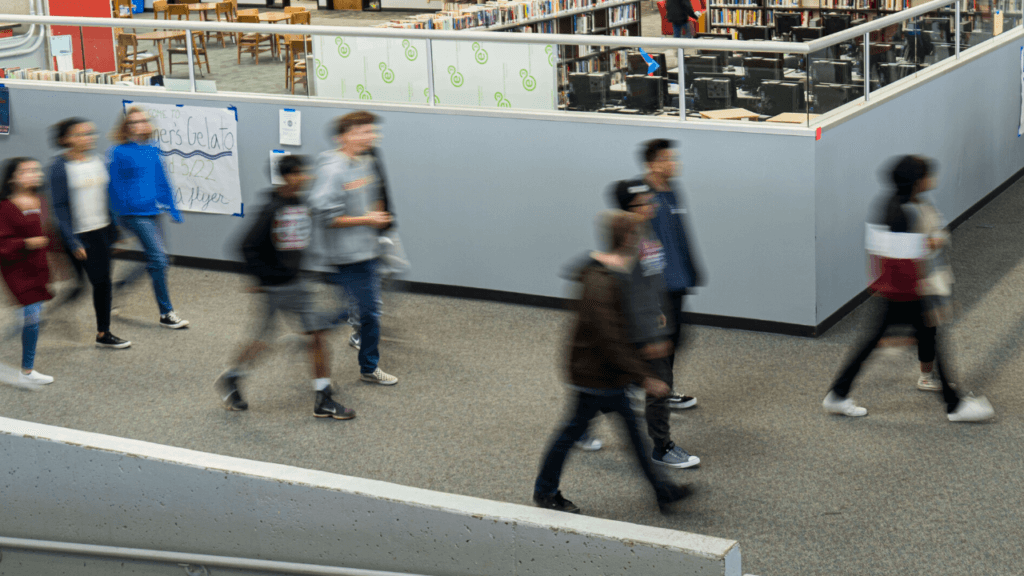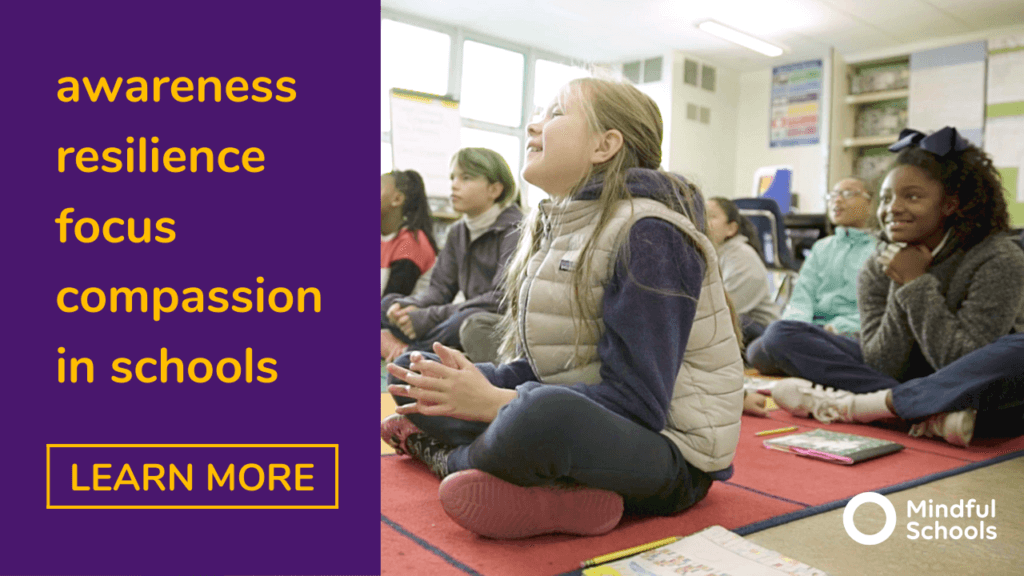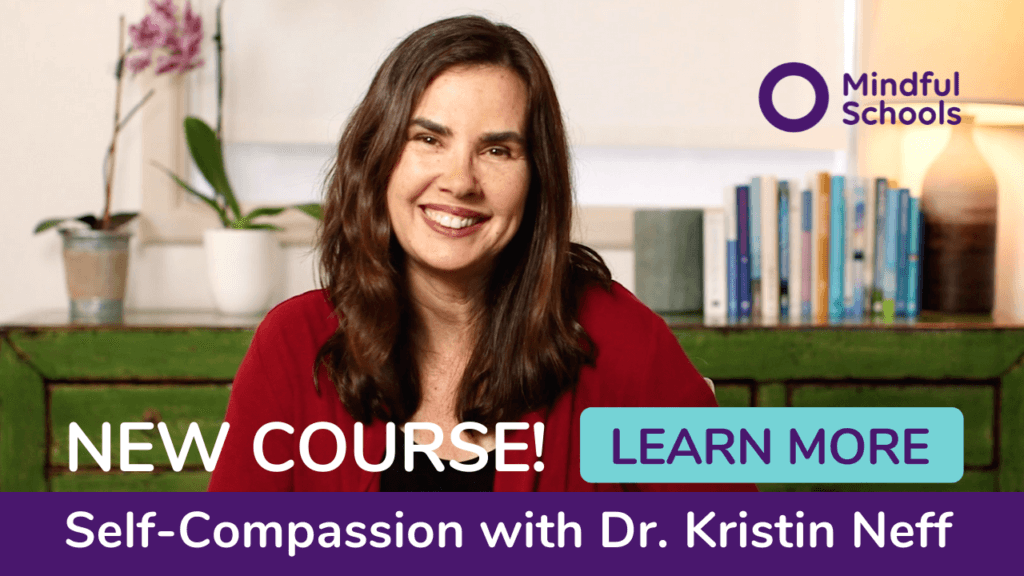NYC educator, Alan Brown, shares what he’s hearing from his students in these unprecedented times and how he’s bringing back virtual “passing time” or “recess” – a critical element in his students’ day. Learn why, and find 4 ideas for your virtual classroom.

In the recent transition to online learning due to the coronavirus, I’ve been getting a lot of requests from schools to provide mindfulness resources for kids.
There are many challenges facing adolescents who are now learning online. Some have been well-covered in public discourse — the dilemma of the stereotypically angsty teen feeling caged in by spending so much time with family; students’ disappointment at the loss of rituals like the spring musical, their sports season, the prom, and graduation; the equity issues and stress related to basic access to technology and internet connectivity.
Mindfulness is often perceived as a practice to meet this hyper-aroused anxious state to help kids settle or find calm. But mindfulness is actually just about noticing what’s happening in the present moment, which may or may not be still or calm.
When I ask students how they hope mindfulness can be a resource, now in their second month of “Zoom School,” they talk less about feeling anxious or unsettled and more about feeling exhausted, deflated, or apathetic toward school. One student shared, “Elmhurst Hospital is down the block and I know what’s happening there. Taking a calculus test just doesn’t seem all that consequential.” What feels extreme is being asked to learn without the trappings of school.
As Zoom School becomes routine, students are talking about the sluggishness and dullness of their experience. They log on to the same screen from the same chair day after day. School is now stripped down of “all the good parts.” There’s no time to just laugh with friends or be loud and silly with one another. Students aren’t able to walk from classroom to classroom in between periods. They notice the effects of screen time.
The Merits of “Passing Time”
Passing time, one of the natural parts of in-person school, is often seen as a logistical necessity–the time it takes to move from one classroom to the next. In many ways, though, passing time is the high school equivalent of recess – an integral element of the elementary school day shown again and again to be of value to children’s development.
Passing time gives learners the chance to move their bodies, to be loud after a time of being relatively quiet in class, and to co-regulate by connecting with peers. All of these in-between-class activities help students to be more learning-ready when they are in class. While we as teachers often want to “get right down to business,” without being mindful of the transition time needed both physically and cognitively, we risk starting our lessons without students being truly present, even if their faces are there on the screen.
4 Mindfulness-Based Activities to Create:
“Virtual Passing Time“
Can the beginning of class be loud? Or wiggly. Or dysregulated. Just like teenagers. If I were in my classroom, it would be normal that as students are arriving, they are talking to one another about the test they just took, the homework they forgot to finish, what someone said at the lunch table, or an instagram story they just saw.
As you begin a virtual class or transition in the upcoming weeks, consider integrating one of these basic mindfulness activities that can serve as a virtual passing time for your students:
1. Move.
Mindfulness doesn’t have to be still! Invite them to notice what it feels like to move the body. What does “eye yoga” feel like when we’ve spend so much time on our screens? Close your eyes and notice what your eyes and eye sockets feel like; then, keeping your head in place, look up, down, left, and right; notice sensation in your eyes and eye sockets as you move them. What does it feel like in your neck to shake the head “yes” and “no”? Open the chest if you’ve been hunched over a keyboard by stretching opposite fingertips towards opposite walls, give your neck and shoulders a squeeze, etc. Or try standing, feeling what it’s like to balance on one foot and then the other.
Article continues below
Change the future of education. Educators, explore how to bring mindfulness to your K12 classroom.
2. Make Noise.
Mindfulness doesn’t have to be silent. If you have the power to mute everyone, then invite everyone to make some noise — an audible exhale (“like you’re trying to fog a mirror”) or really any noise that comes to them (“go ahead and amuse yourself, no one on the call can hear you!”) — and notice what it feels like as they make the sound.
3. Laugh.
Mindfulness doesn’t have to be serious. Start with a silly check in like “would you rather?” (…have a tail or wings? …have hot dogs for lips or french fries for eyelids?) Or a go around to hear “what’s something that’s made you laugh recently?” Notice what it feels like to laugh or smile if that’s what happens.
4. Arrive.
Mindfulness doesn’t have to be about just what’s happening on the inside. Normally students come into a different room for the beginning of class. It takes the body some time to orient and attune to the new space, and this arrival is part of the natural cadence of learning. In fact, we often ignore this in our in person teaching. While you can’t change the scenery in their room, inviting an orienting practice can help them notice something new where they already are. Have students notice something new about their space — maybe something they haven’t seen before or at least something they haven’t noticed/paid attention to today. This can be a silent noticing activity, or you can do this aloud as a community-building activity. To do this as a check-in activity, invite students to share what they notice, or ask them to name one thing they can see in their space and share how it relates to how they’re doing, e.g., “the sun’s coming in my window right now and I’m actually feeling pretty energetic,” or “I have a cactus on my desk and honestly, I’m feeling kinda prickly today.”
Across the board, my students report being more appreciative than ever for their teachers, and for school in general. In the past few weeks, I’ve heard students share gratitude (and longing) for a range of things they never thought they’d miss – from getting up early in the morning to getting disciplinary infractions for lateness or breaking dress code.
My colleagues and I feel a similar sadness at not getting to be in the building with them, to offer the fuller version of what we would normally teach, or say goodbye in person at the end of the year. While we can’t give them all of the trappings of in-person school back, we can offer some small elements of what they’re missing. When we listen to students with openness and curiosity, when they tell us about their experience, when we drop the need to rigidly control or be defensive about what they say, we can co-create a virtual experience that makes the best of a very difficult situation for everyone.
Alan Brown is the Lead Teacher of the Mindful Schools Mindful Teacher Certification Program. He is a longtime educator and serves as Director of Integrative & Co-curricular Learning at Grace Church School in New York City, where he leads mindfulness & positive education programs for students, faculty, and for parents. Diagnosed with Tourette’s Syndrome in middle school, Alan came to mindfulness through yoga and a search for stillness in the body and regulation in the nervous system, so he has a keen interest in working with students with TS, ADHD, OCD, and other nervous system vulnerabilities. Over the past 15 years, Alan has taught in both public and private settings as a humanities instructor and dean, and has worked with many other schools and districts as a trainer for GLSEN (the Gay Lesbian Straight Education Network), where he now serves on the National Advisory Board.


